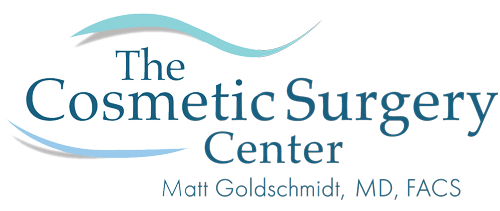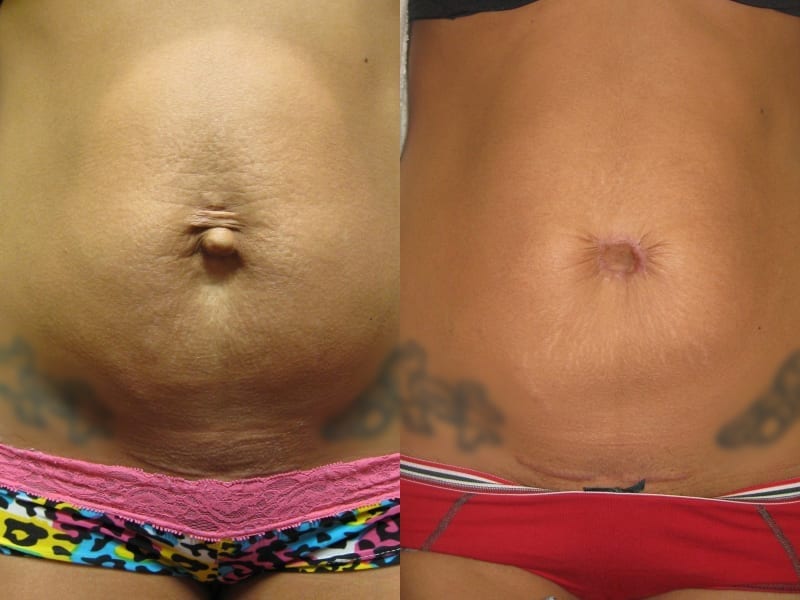Umbilicoplasty, or belly button reshaping surgery, is designed to address navel deformities or scars, transform a protrusion (outie) to an inversion (innie), reduce excess navel skin, correct a hernia that caused the skin to stick out, and eliminate irregularities or bulging in the belly button region. The surgery is quick, safe, and effective and provides a significantly improved abdominal appearance.
Am I a Candidate for Belly Button Reshaping?
Patients who are dissatisfied with their belly button appearance and have realistic expectations may be good candidates for this procedure. You will be asked to quit smoking and adjust medications prior to your surgery. Discuss your medical history, concerns, and preferences during your consultation with Dr. Matt Goldschmidt to fully communicate everything you desire from your surgery.
How Is Belly Button Reshaping Performed?
Belly button reshaping is commonly performed in conjunction with tummy tuck surgery or liposuction, but it can be completed as a standalone procedure if your belly button is your only area of concern.
Dr. Goldschmidt can conduct umbilicoplasty with light sedation (twilight anesthesia), general anesthesia, or local anesthesia. Excess skin is trimmed away, the umbilicus is reshaped, sometimes repositioned, and sutures are used to close the incision and secure your restructured belly button in its new location. The entire procedure usually takes less than an hour to perform.
What Is Recovery After Belly Button Reshaping Like?
Most patients return home the same day as their procedure. Mild discomfort, swelling, and bruising is normal and can be relieved with prescription pain medication. Returning to work can take a day or two, and exercise should be avoided for the first two or three weeks.
Your surgeon will provide postoperative care instructions to help you keep your belly button clean and dry. Stitches are usually removed within 10 days unless they are dissolvable. Symptoms should dissipate within two weeks with minimal scarring.
When Will I See My Belly Button Reshaping Results?
The results of belly button reshaping will differ for every patient, but Dr. Goldschmidt utilizes his aesthetic eye and surgical skill to ensure optimal results. You can expect to enjoy an improved midsection appearance and feel a boost in self-confidence with more comfort in wearing swimsuits.
Frequently Asked Questions About Belly Button Reshaping
How much does a belly button reshaping procedure cost?
The cost of the procedure varies from patient to patient. The final price will depend on how much work is being done and if the belly button reshaping is a standalone procedure or happening in conjunction with other surgeries.
Pricing can be discussed during your initial consultation.
Does a belly button reshaping procedure require anesthesia?
Yes, anesthesia is necessary for this surgery.
Is a belly button reshaping procedure an outpatient surgery?
Yes, most patients can go home the same day of the surgery. However, as the patient may still feel the effects of the anesthesia, a ride home will need to be arranged. Additionally, it’s generally recommended someone spend the night to watch the patient the first day after any surgery.
What kind of scar will a belly button reshaping surgery leave?
The scar will be hidden inside the belly button, so it will be minimal and virtually invisible.
Can I combine my belly button reshaping with other surgeries?
Yes, it is quite common to combine a belly button reshaping surgery with other procedures, such as a tummy tuck. Combining surgeries can reduce costs, shorten the time needed off work, and combine recovery periods.
During your consultation, ask your doctor about the specific procedure combinations you are interested in.
Is a belly button reshaping procedure covered by insurance?
Most people elect to get a belly button reshaping surgery for cosmetic reasons. Generally speaking, insurance providers don’t cover cosmetic, elective surgeries. If you can prove you need the procedure for medical reasons, there may be a chance your insurance provider will cover it.
It is best to contact your insurance provider directly to get more information.
What kinds of belly button reshaping options are there?
Some of the most common reasons people get a belly button reshaping procedure are:
- To change an “outie” belly button to an “innie”
- To reduce the size of their belly button
- To change the shape of their belly button
- To repair the damage done by a belly button piercing
- To match the results of a tummy tuck
What is the aftercare like for belly button reshaping?
When patients leave their surgery, the medical staff will expertly wrap their belly button/abdomen in a compression garment. Patients will then be given instructions on how to care for the treated area, including cleaning it and wrapping it back up.
Patients will need to keep the area dry for the first 24 hours post-operation and leave their compression garments on. After 24 hours, patients can wash the area gently with an indirect stream of water.
Patients should attend all their post-operation consultations so the surgeon can check on their healing progress.
What are the risks of a belly button reshaping surgery?
Belly button reshaping is an overall safe procedure. Still, all surgeries carry some element of risk. A belly button reshaping surgery’s risks include:
- Bleeding
- Infection
- Delayed wound healing
- Scarring
During your consultation, your surgeon will discuss your current health and medical history to ensure you don’t have any issues that can cause serious complications.
For more information about Belly Button Reshaping in Cleveland, OH or to schedule your Belly Button Reshaping in Cleveland, OH consultation with Dr. Matt Goldschmidt, please call (216) 264-8100.

